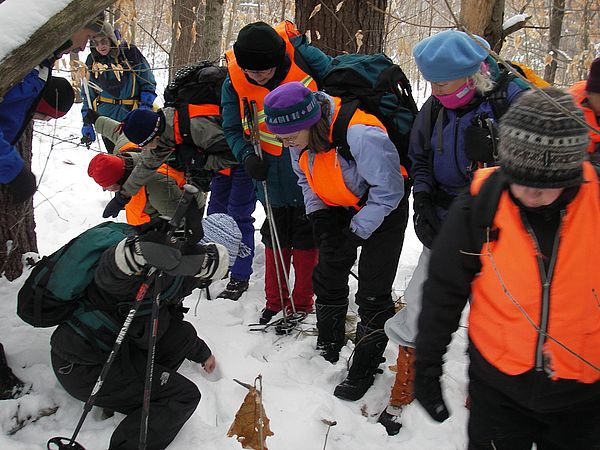Feet Make Tracks - Winter Wildlife Tracking with the Newfound Tracking Team
by Martha Twombly, board member
Spending a season trekking in the forest with professional tracker, photographer, forester and wildlife biologist Sue Morse of Keeping Track way back in 2010 changed our Newfound Tracking Team's understanding of the woods, forever.
Many of us grew up hiking and exploring the New Hampshire woods and myriad other places around the country and the world. But, we had not spent time understanding “wildlife habitats” from a holistic perspective: for example, how wild animals choose and utilize their home territories. It was a real awakening!
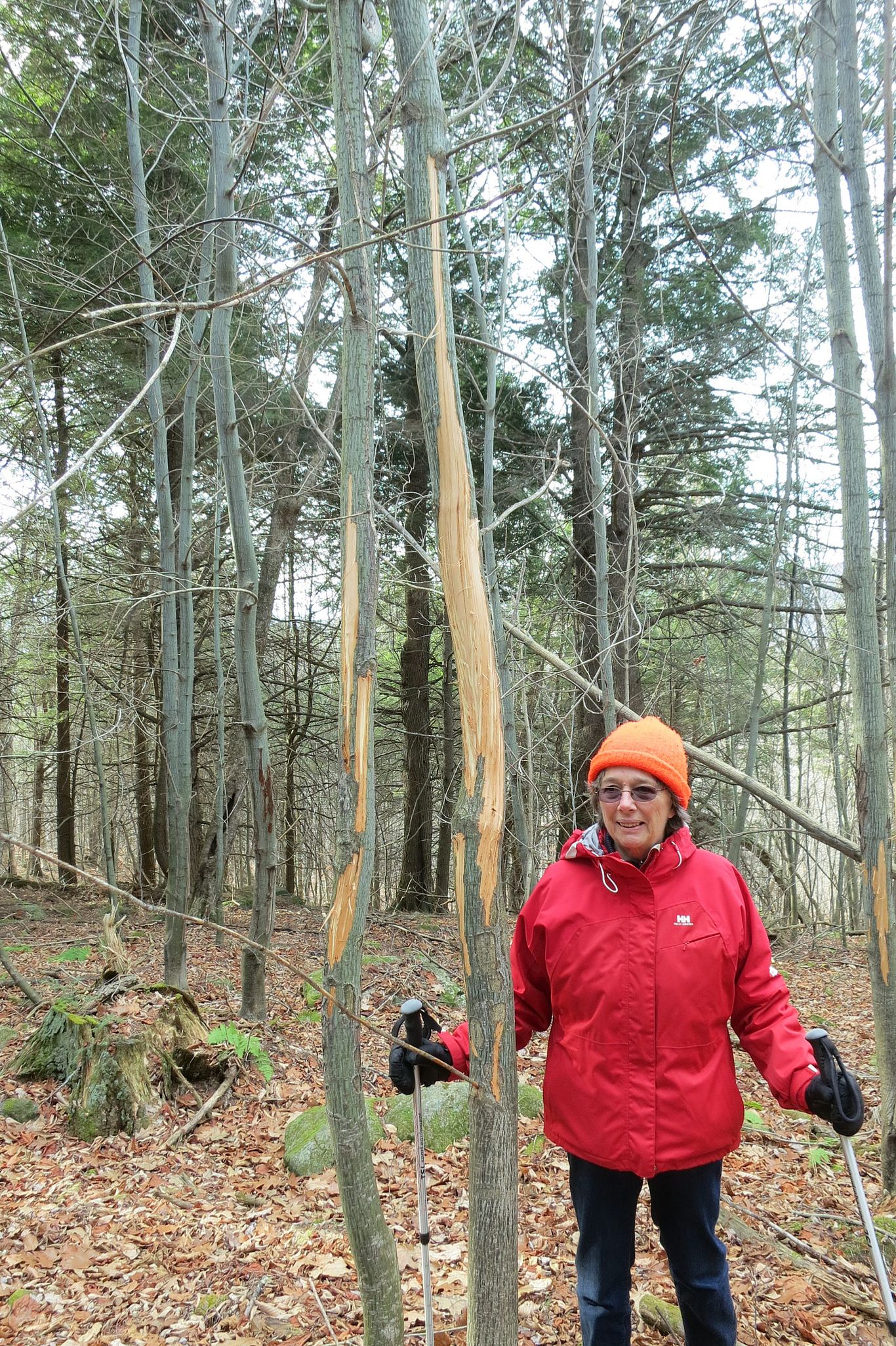
Linda Walsh pointing out a moose feeding sign.
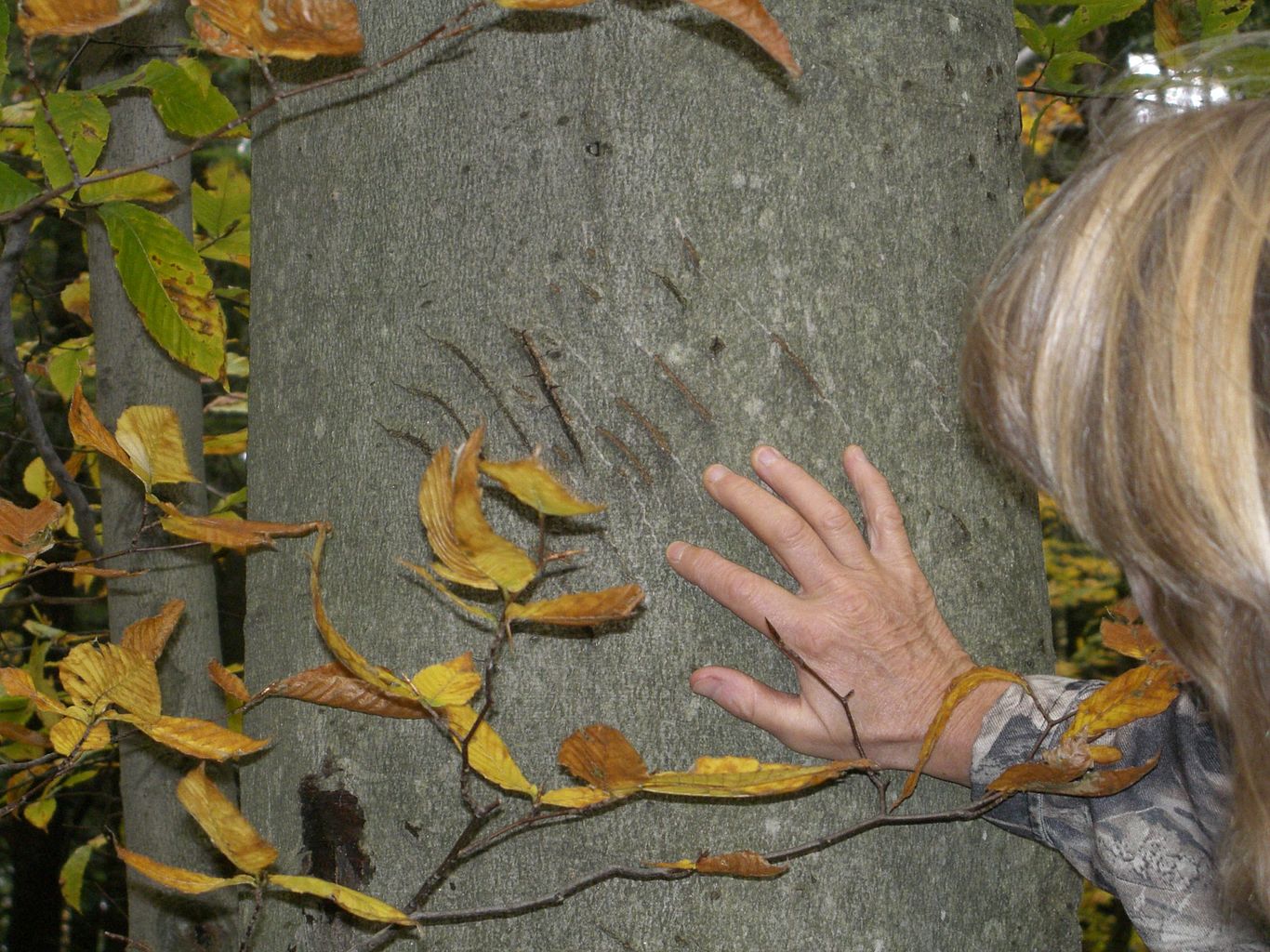
Sue Morse identifying bear claw marks.
During the winter our team ventures out one day a month to one of the many conserved lands in the Newfound region. A few of us re-con a route during the prior week in preparation for the outing. A few years back Sue Morse was scheduled to join us. Our failure to find tracks other than the ubiquitous deer and coyote during our re-con, made us worry that Sue would be disappointed in our choice of locations, because of lack of animal sign. We had also warned the group that we had a good mile-long trek just to get to the “start” of our prime habitat at a beaver pond.
We were SO wrong! Within a few hundred yards, Sue stopped us to take a closer look at what we thought might be a deer, following the logging road like us. “Always track an animal backwards,” she said, “you don’t want to startle an animal which is trying to conserve its energy, particularly in the winter.” So, we did just that. Snow had blown into the tracks, obscuring them somewhat. Gingerly, we followed Sue’s footsteps to search for more clues. Sure enough, she found a track that showed claw points, but she was not ready to "call it."
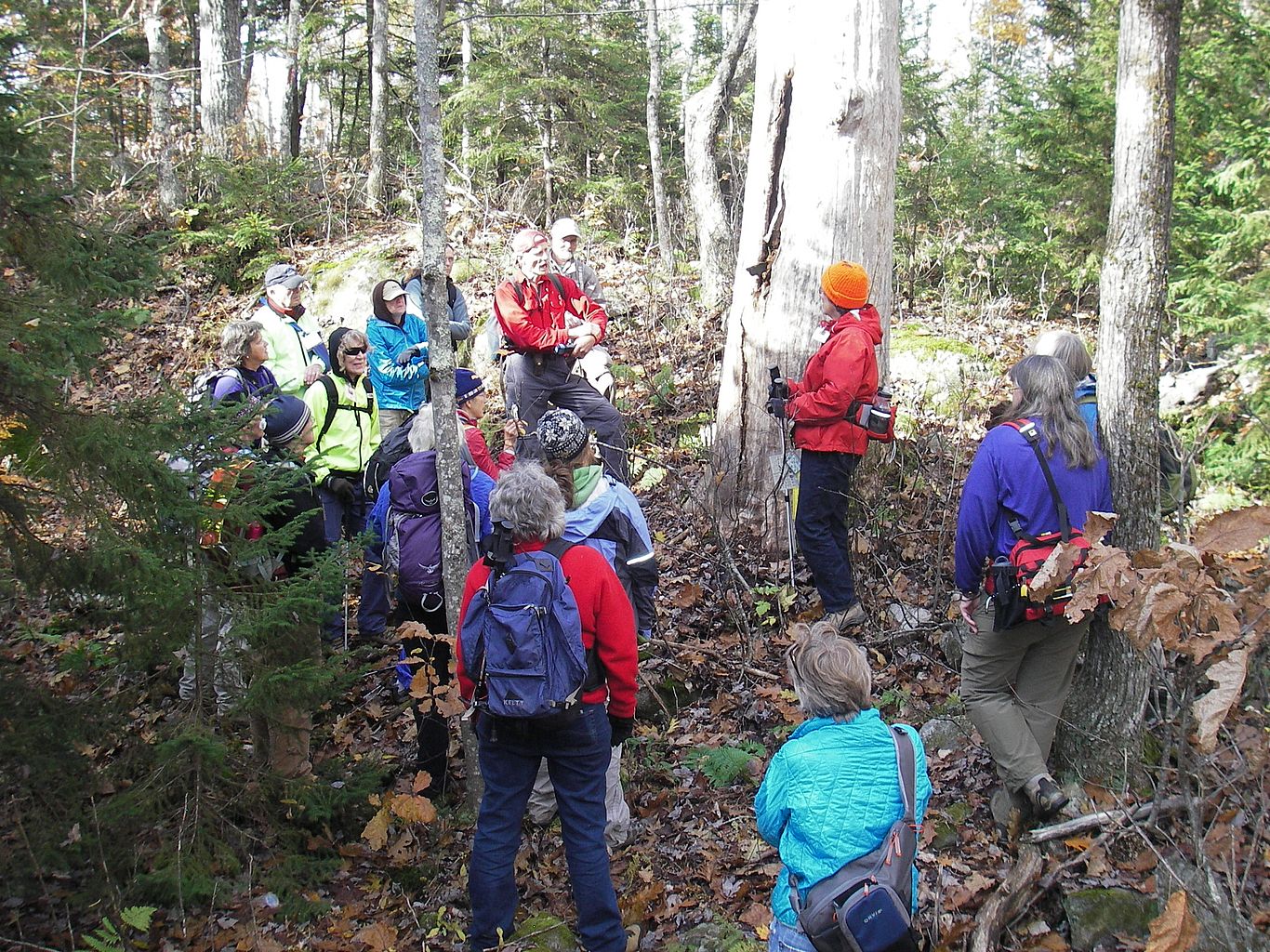
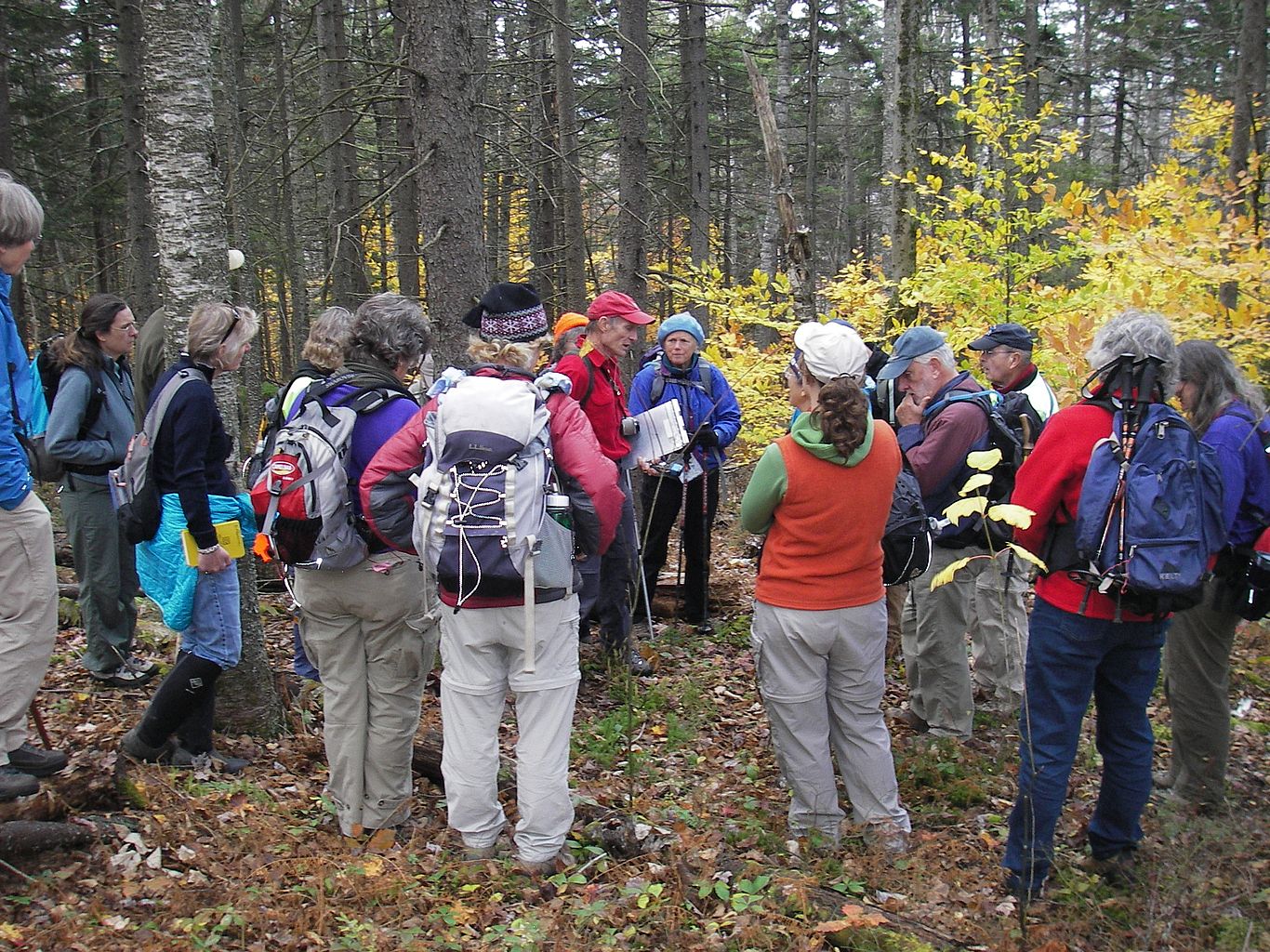
THREE CLUES MAKE A POSITIVE ID
Clue 1 - Moving on slowly, Sue found one hair on a hemlock sapling--It was grey.
Clue 2 - A few steps more, and voila! A print with less snow, Sue gently touched the pad print with her finger to melt back the snow, and we saw the boxy shape of a canine print.
Clue 3 - Finally, several steps ahead, a team member found a clear print in a wet spot in the snow. The classic “X-pattern” of a canine footprint was clear, and the size told us this was sign for our friend coyote hunting for food.
We also measure track: size, stride (length), straddle (width), pattern of tracks, and habitat location. We have many hilarious discussions trying to confirm tracks that are not quite perfect or clear. We aren't deterred if we can't find the elusive 3 clues, we just keep on exploring!
Someone asked, “How can we tell this isn’t just the neighbor’s dog?”
Sue answered that the coyote print trail was very straight, efficient and “determined,” as characteristic of most wild animals, in its hunt for food. A well-fed pet on the other hand would be gallivanting to and fro around the trail in a very energy-wasting pattern, not worrying where its next meal would come from.
Our team typically spends the day hiking a 2-3 mile loop looking for signs of wildlife – the big six mammal species--bear, bobcat, moose, fisher, fox, otter, as well as other inhabitants of the Newfound watershed--weasel, mink, beaver, American Marten, deer, coyote, birds, mice, voles…even squirrels. Moving slowly with all eyes scanning the forest, we stop frequently to pay attention to some indicator of a wild animal’s presence.
Remember, animal tracks are only 1 clue.
Animals choose the habitats best suited to their needs. They create many unique signs to satisfy those three basic needs—food; shelter from: weather – predators - a place to safely rear their young; and partners. Just like us! We’ll explore those in future articles!
Going Wildlife Tracking this Winter?
Note: if you’re in a group, not everyone has to bring everything!
What to wear:
- Layers of warm, insulated clothing – As you move around, then stop to observe, you can remove or add clothing, mittens, hats, face-coverings as needed. Polypro/techwick underlayers do not absorb moisture but wick it away from your body. Both wool and polypro/techwick are a far better alternative than cotton when outdoors in winter.
- Insulated, sturdy outdoor boots that will help you hike on foot, micro-spikes or snowshoes.
Pack your backpack:
- Plenty of water
- Hot coffee, tea or soup in a thermos
- Energy bars, nuts, fruit
- Extra down parka, socks, mittens
- Chocolate (a must! You’re burning enough calories even if you’re on a diet!)
- Anything else you like to eat and/or share
Bring these tools:
- Maps and GPS
- Snowshoes and micro-spikes
- Hiking or ski poles
- Tracking ruler and ID cards
- Tracking books – if not too heavy
- Notebook for recording information
- Pencil
- Compass
- Magnifying glass
- Camera
Prepare For Safety:
- Hand/toe warmers
- First aid kit
- Toilet paper
- Cell phone
To close, we’ll show you the classic difference between “canids” (the dog family), and “felines” (the cat family).
Canid toes are arranged in two parallel lines: the top pads are even, and the bottom pads are even. This creates a clear “X” pattern in between the toes, and you can often see the claws on the top pads. Check out your dog’s feet closely, or observe their track in the snow when you take a walk. And of course the size of the footprint, the “straddle” (or width of track patterns as the animal moves ahead) will help determine which critter: coyote, red fox, grey fox. You can also determine if they are running or walking, and if there are one or more animals.

Eastern Coyote
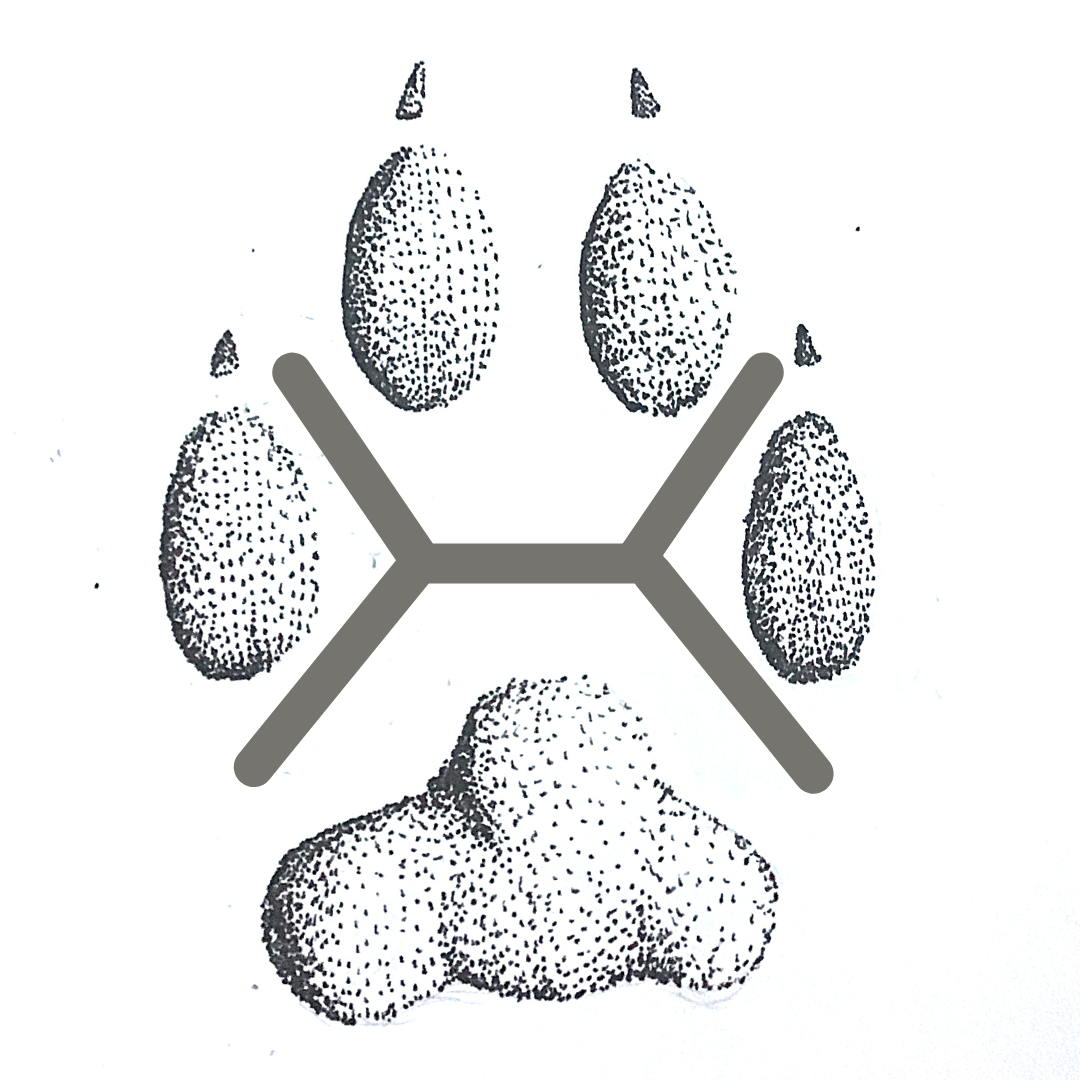
Grey Fox
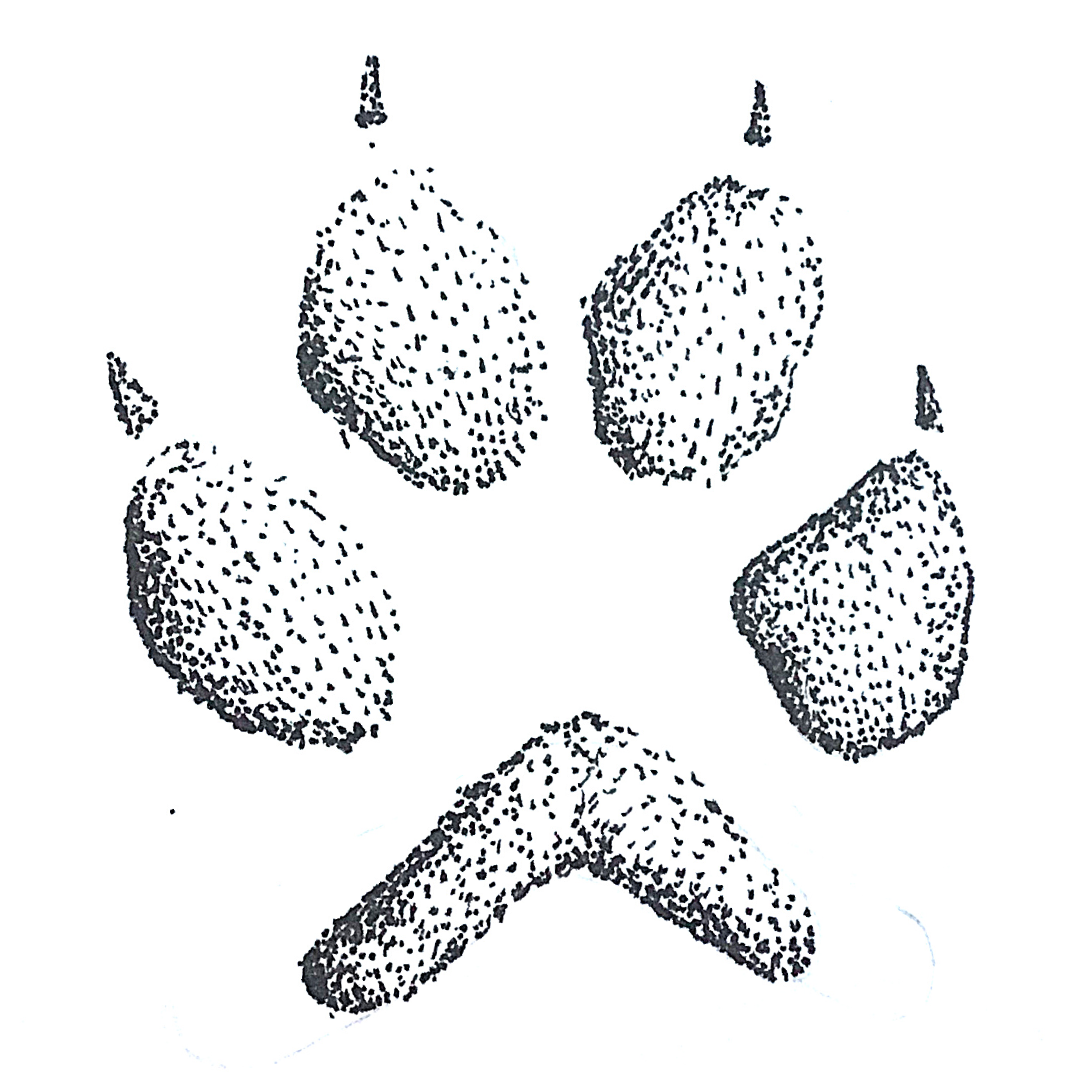
Red Fox
Feline toes are unevenly arranged in an arc, kind of like our fingertips. They also have a paw pad print shaped like a mountain or “M.” They are generally rounder overall than canid prints.
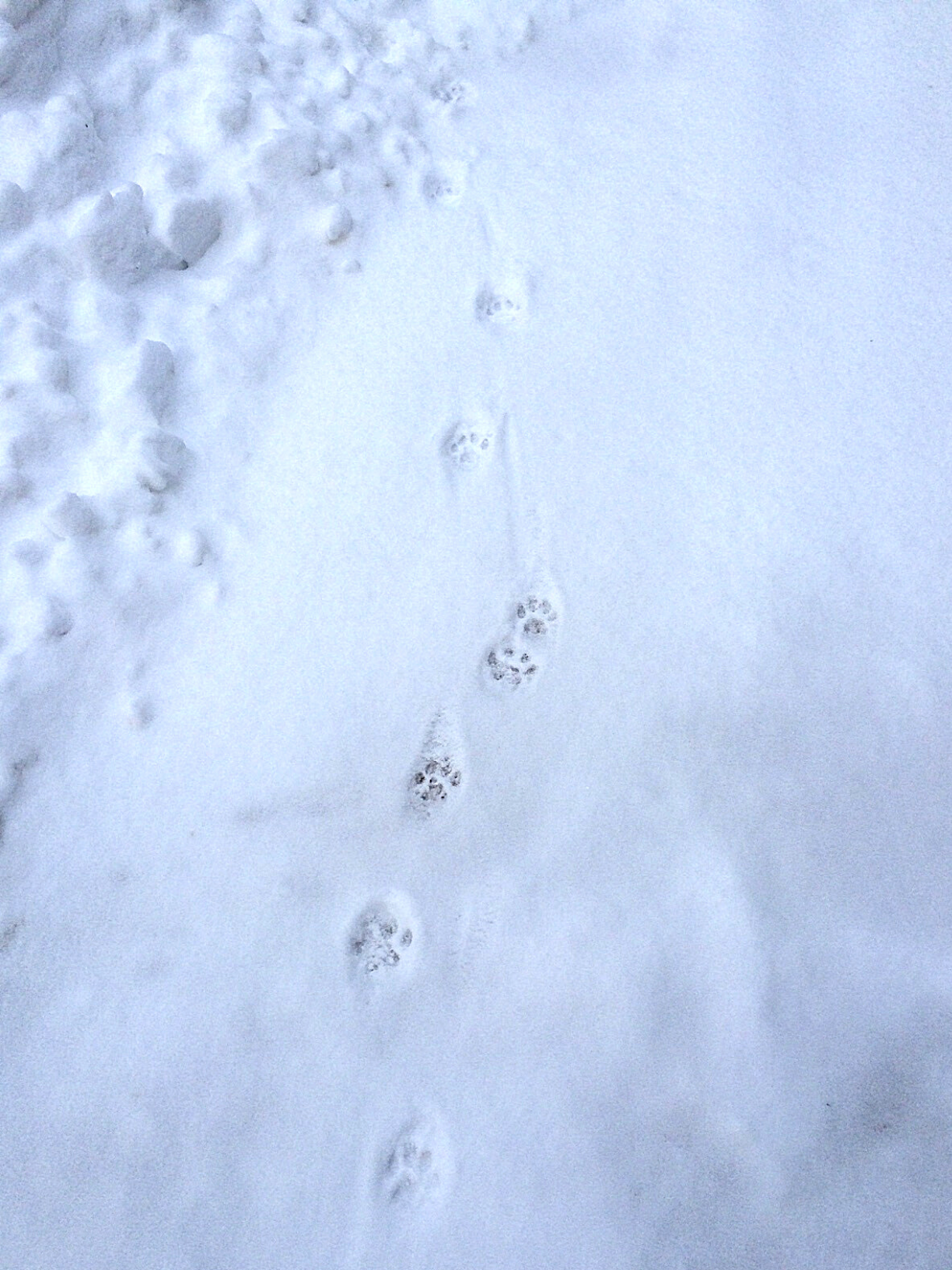
Bobcat tracks on the Cockermouth River

Bobcat Track
It’s quite a fun adventure to find and try to identify what animals are utilizing a particular habitat. A couple of resources we use the most are: Mammal Tracks & Sign by Mark Elbroch, and Mammal Tracks and Scat by Lynn Levine and Martha Mitchell (either a full size or pocket size version). Visit KeepingTrack.org for many essential tools, activities and articles for wildlife tracking. Check your local bookstore for many other books and laminated animal track cards to carry with you. Have fun out there!
Special thanks to Martha Twombly's granddaughter, Mackenzie Ray, age 11, for this article's illustrations.

